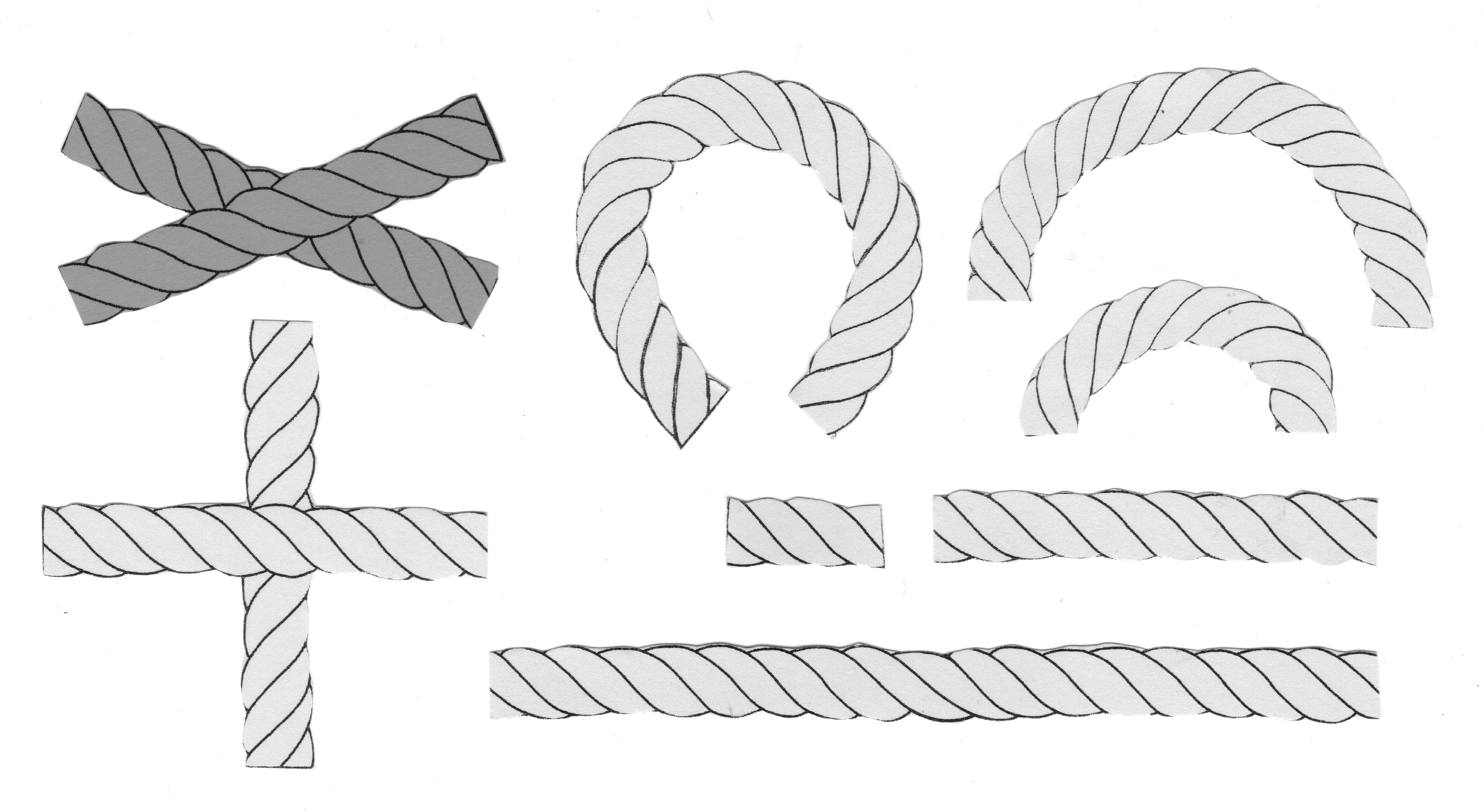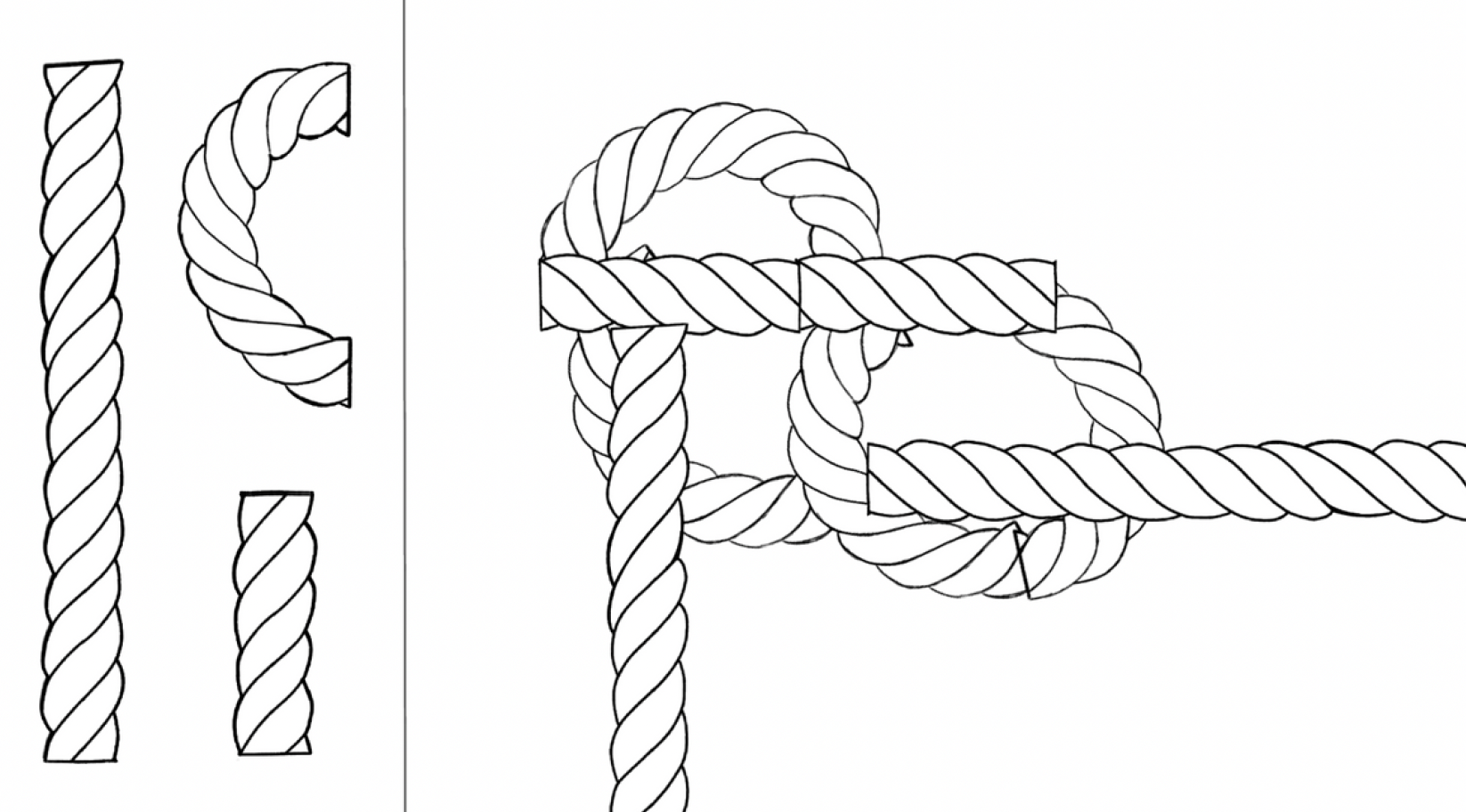How can shape grammar support computational thinking by enabling users to reconstruct knots through rule-based visual reasoning?
Computational thinking is often taught through text-based methods, which can be inaccessible for visual and kinesthetic learners. There is a growing need for hands-on tools that make algorithmic concepts more approachable. By applying shape grammar and semiotic pattern recognition to modular knot components, this research introduces a visual system that supports foundational skills in recursion, abstraction, and computational reasoning through spatial problem-solving.
Literature Review
Knight and Stiny analyze the theoretical foundations of shape grammars, linking the computational properties of shapes to broader applications. Their work provides a framework for understanding how complex forms can be generated and manipulated through a set of rules.
Ham explores the concept of styles in design advocating for a playful, hands-on approach to learning and designing. This perspective highlights the value of experimentation and iteration in the design process.
Jonathan Williams expands on this by exploring algorithmic crafting through knotting. He emphasizes hands-on learning, where knotting serves as both craft and computation. His work shows how making can support experimentation, inspire design, and create connections between abstract algorithmic concepts and physical practice - highlighting the role of play in computational design.
Methodology
Research by design is a methodology where prototyping, testing, and reflection drive the creative process, allowing insights to emerge through making. Knot diagrams were first designed in Adobe Illustrator, then deconstructed into curved and straight segments to create the rope pieces. Developing and refining these knot puzzle sets became both a practical tool and a theoretical study. Each design cycle with participants improved the process to better model knot tying and recognize patterns and develop problem-solving strategies. The puzzles serve as both the product and method of research.

Iterative Testing
Participants were shown an image of a knot and asked to replicate it using the provided physical or digital knot puzzle pieces. Each round tested the participant's problem-solving strategies and how they visually compartmentalized the knot's crossings. Some participants approached the task sequentially, like a linear algorithm, while others started at the most complex node and worked outward.
Trial #1
The preliminary round was held in person using paper pieces to represent individual knot components. Figure 1.0 displays the eight unique segments users were given. Users consistently relied on three pieces to replicate knots. The paper required gentle stacking and lacked the stability to hold the knot's form permanently.

Trial #2
The second test was conducted over Zoom using digital knot puzzle pieces. The prototype addressed some of the initial concerns by making the pieces easier to manipulate and simplifying the piece set. Figure 2.0 shows a user correctly identifying an overhand knot crossing. Figure 2.1 presents a more advanced challenge, where the user successfully completed the slip knot by working through each defining crossing. One user cut a curved piece in half. This created a more versatile rope segment and proved even fewer of pieces allowed for greater flexibility in abstraction, recursion, and visual reasoning.


Results
This research provides evidence that participants were able to identify recurring patterns and modular segments, indicating an intuitive grasp of the underlying structure and logic of the knots without any prior knowledge of knot tying. User testing reinforced the applicability of shape grammar to knot construction, showing how participants could use modular reasoning to interpret and rebuild knots through a rule-based visual system.

Future Research
An additional round of user testing will use a refined puzzle set that features more adaptable curved pieces to better represent the complexity of knot segments. Experiments will explore the use of negative space within the puzzle design to investigate whether emphasizing voids changes how participants approach problem-solving. New connector pieces that simulate the working ends of a knot will also be developed to streamline the assembly process and provide further insight into how users sequence and model their reasoning.

